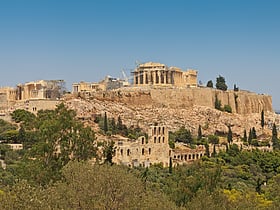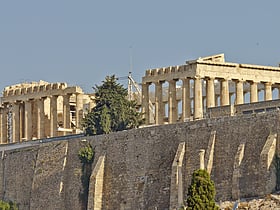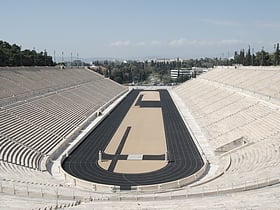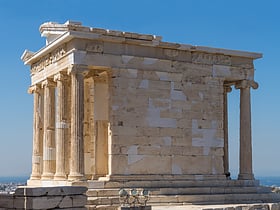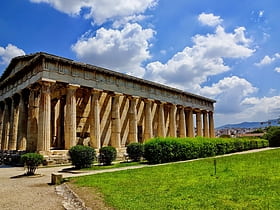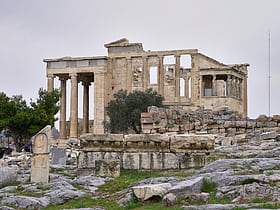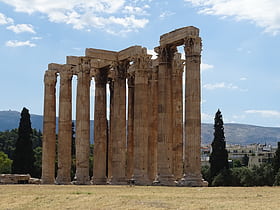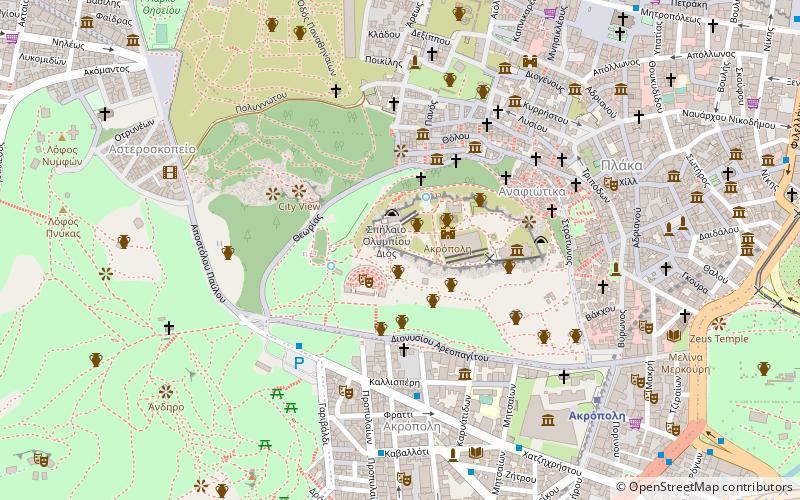Athens: Ancient Greek Architecture
Places and attractions in the Ancient Greek architecture category
Categories
- Museum
- Historical place
- Archaeological site
- Area
- Art museum
- Ancient Greek architecture
- History museum
- Monuments and statues
- Specialty museum
- Temple
- Street
- Ruins
- Church
- Park
- Memorial
- Archaeological museum
- Neighbourhood
- Unesco
- Concerts and shows
- Theater
- Square
- Sacred and religious sites
- Shopping
- Sport
- Sport venue
- Acropolis
- Performing arts
- Event space
- Natural attraction
- Library
- Universities and schools
- Nature
- Arenas and stadiums
Acropolis
5th-century B.C. hilltop temple monument Perched atop the rocky outcrop of Athens, the Acropolis stands as a monumental testament to the grandeur of ancient Greek civilization. This iconic citadel, a UNESCO World Heritage Site, is an enduring symbol of the city and represents the apogee of classical...
Parthenon
Iconic 5th BC Athenian temple ruins The Parthenon stands as the quintessential symbol of ancient Greece and a testament to classical Greek architecture. Nestled atop the Acropolis in the heart of Athens, this temple was dedicated to the goddess Athena, the city's patron deity.
Panathenaic Stadium
The world's only white marble stadium The Panathenaic Stadium is an iconic sport venue nestled in the heart of Athens, Greece, and stands as a proud testament to the country's ancient sporting history. Known as the birthplace of the modern Olympic Games, this all-marble stadium is a reconstruction of the...
Temple of Athena Nike
Ionic temple depicting a Greek goddess Perched on the rocky outcrop of the Acropolis in Athens, the Temple of Athena Nike epitomizes the splendor of ancient Greek architecture. This temple, dedicated to the goddess Athena Nike, stands as an enduring tribute to the victory and might of the Athenian empire.
Temple of Hephaestus
Ancient, hilltop place of worship The Temple of Hephaestus stands as a monument to ancient Greek architecture and religious practice, nestled in the Agora of Athens, Greece. Dedicated to Hephaestus, the god of fire and metalworking, this well-preserved Doric temple epitomizes the grandeur of classical...
Erechtheion
Iconic temple of ancient Greece The Erechtheion is a revered architectural marvel situated on the north side of the Acropolis of Athens, Greece. This ancient temple, constructed from 421 to 406 BCE, stands as a testament to the religious and cultural significance of the city during its classical...
Temple of Olympian Zeus
Ruined temple completed under Hadrian The Temple of Olympian Zeus, also known as the Olympieion, stands as a colossal tribute to ancient Greek architecture in the heart of Athens, Greece. Once one of the largest temples in the ancient world, its construction spanned several centuries, beginning in the 6th...
Theatre of Dionysus
Ancient tiered performance arena The Theatre of Dionysus is an ancient Greek theatre in Athens. It is built on the south slope of the Acropolis hill, originally part of the sanctuary of Dionysus Eleuthereus.
Temple of Apollo Zoster
The Temple of Apollo Zoster is an ancient Greek temple, the remains of which are located at Vouliagmeni in Athens, Greece.
Odeon of Athens
The Odeon of Athens or Odeon of Pericles in Athens was a 4,000 m2 odeon, built at the southeastern foot of the Acropolis in Athens, next to the entrance to the Theatre of Dionysus.
Plato's Academy
The Academy was founded by Plato in c. 387 BC in Athens. Aristotle studied there for twenty years before founding his own school, the Lyceum. The Academy persisted throughout the Hellenistic period as a skeptical school, until coming to an end after the death of Philo of Larissa in 83 BC.
Stoa Poikile
The Stoa Poikile or Painted Porch, originally called the Porch of Peisianax, was erected during the 5th century BC and was located on the north side of the Ancient Agora of Athens. The Stoa Poikile was one of the most famous sites in ancient Athens, owing its fame to the paintings and loot from wars displayed in it.
Temple of Apollo Patroos
The Temple of Apollo Patroos is a small ruined temple of Ionic order built in 340–320 BCE. It is 10 m wide and 16.5 m long, and is located north-west of the Ancient Agora of Athens, near the Stoa of Zeus.
Metroon
A metroon was an ancient Greek temple dedicated to a mother goddess. They were often devoted to Cybele, Demeter, or Rhea.
Prytaneion
A prytaneion was seat of the prytaneis, and so the seat of government in ancient Greece. The term is used to describe any of a range of ancient structures where officials met, but the term is also used to refer to the building where the officials and winners of the Olympic Games met at Olympia.
Altar of Zeus Agoraios
The Altar of Zeus Agoraios is an altar dating to the 4th century BC located north-west of the Ancient Agora of Athens, constructed from white marble, 9m deep and 5.5m wide. It was one of the first objects to be discovered inside the Agora during the excavations of 1931.
Funerary naiskos of Aristonautes
The Funerary naiskos of Aristonautes is a funerary monument dating to around 320 BC, on display in the National Archaeological Museum of Athens with the inventory number 738.
Pelasgic wall
The Pelasgic wall or Pelasgian fortress or Enneapylon was a monument supposed to have been built by the Pelasgians, after levelling the summit of the rock on the Acropolis of Athens. Thucydides and Aristophanes call it "Pelargikon", "Stork wall or place".
Map

